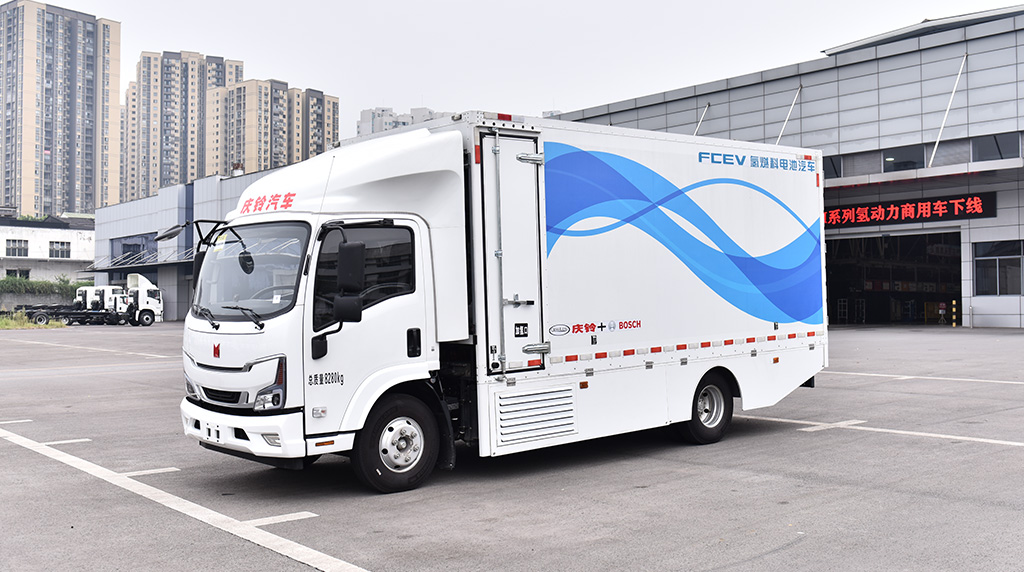The company says that its cooperation with a test fleet of 70 hydrogen fuel cell-powered trucks set to take to Chinese roads before the end of the year could have applications vital to the future of the Australian heavy vehicle market.
The joint venture – Bosch Hydrogen Powertrain Systems – will develop, assemble, and market hydrogen fuel cells, initially for the Chinese market. Production of so-called fuel cell power modules will begin at Bosch’s Wuxi plant outside of Shanghai later this year, supporting a market Bosch estimates will be worth over €18 billion ($AU28.2b) by the end of the decade.
Bosch says the longer-term goal of the project is to pool the technology and market expertise gained to develop the Chinese fuel-cell market and to transform the automotive industry as a whole.
Speaking to GoAutoNews Premium via video link from Melbourne this week, Bosch Australia & New Zealand general manager of automotive aftermarket, Michael Werle, said the Chinese model could provide important insights into how the Australian long-haul trucking industry can remain viable as emissions regulations intensify.
“Hydrogen is an interesting and viable option for Australia, especially as it relates to long-haul trucking operations and other areas of the heavy commercial landscape,” he said.
“Australia also has the possibility to produce hydrogen locally, so I think at the moment there are a lot of considerations for hydrogen-powered vehicles to become part of our transportation future.”
Mr Werle explained that although Bosch is also working in fields including vehicle electrification and the improvement of existing internal combustion technology, that hydrogen must be considered in countries where long-distance travel and decentralised population centres were a fact of life.
“I think hydrogen fuel-cell technology will become an interesting part of the technology mix moving forward, especially in countries like Australia that has more isolated rural areas. It will address topics like range anxiety and long refuelling times that we know people have concerns about,” he continued.
“For those reasons, it’s definitely an area in which Bosch is investing. At the moment, we have a complete technology stack around hydrogen fuel cells, what we call a ‘complete system approach’, and it’s where the joint venture with Qingling will demonstrate the feasibility of this technology.
“Like China, Australia has large distances between major centres, and from an infrastructure point of view, hydrogen is much easier to support – obviously hydrogen is a lot easier to transport in the traditional sense – and on a global level, we have solutions developed for these types of ‘hydrogen stations’.
“That’s why hydrogen is definitely part of the overall solution Bosch is looking into for Australia. If we see a viable business case for the technology here, then I think it’s a path we will most likely see in the near future.”
Toe-in-the-water exercises in hydrogen-powered passenger vehicle fleets have been underway in Australia for some time.
Companies including Hyundai and Toyota have showcased their own FCEV technology primarily to state and local government fleet interests, the latter offering just 20 participants the chance to experience hydrogen-powered motoring on a lease-only basis.
Limited refuelling stations for hydrogen-powered vehicles currently limit their appeal to broader audiences.
But with companies including Bosch, Air Liquide, Hazer, and others working to adapt existing service stations for hydrogen refuelling – and simultaneously provide support to the power grid – it’s thought the technology could work together with fast charging EV networks.
An Australian Energy Market Commission report published earlier this year said: “The unique opportunities for this scale of hydrogen production that also support the electricity system arise when the developments connect to shared electricity networks, rather than being developed in isolation of existing shared networks.
“When this occurs, there is significant scope for generation following, ancillary and network support services to be provided in a way that is beneficial to the broader electricity market, while [simultaneously] servicing hydrogen demand.”
By Matt Brogan

